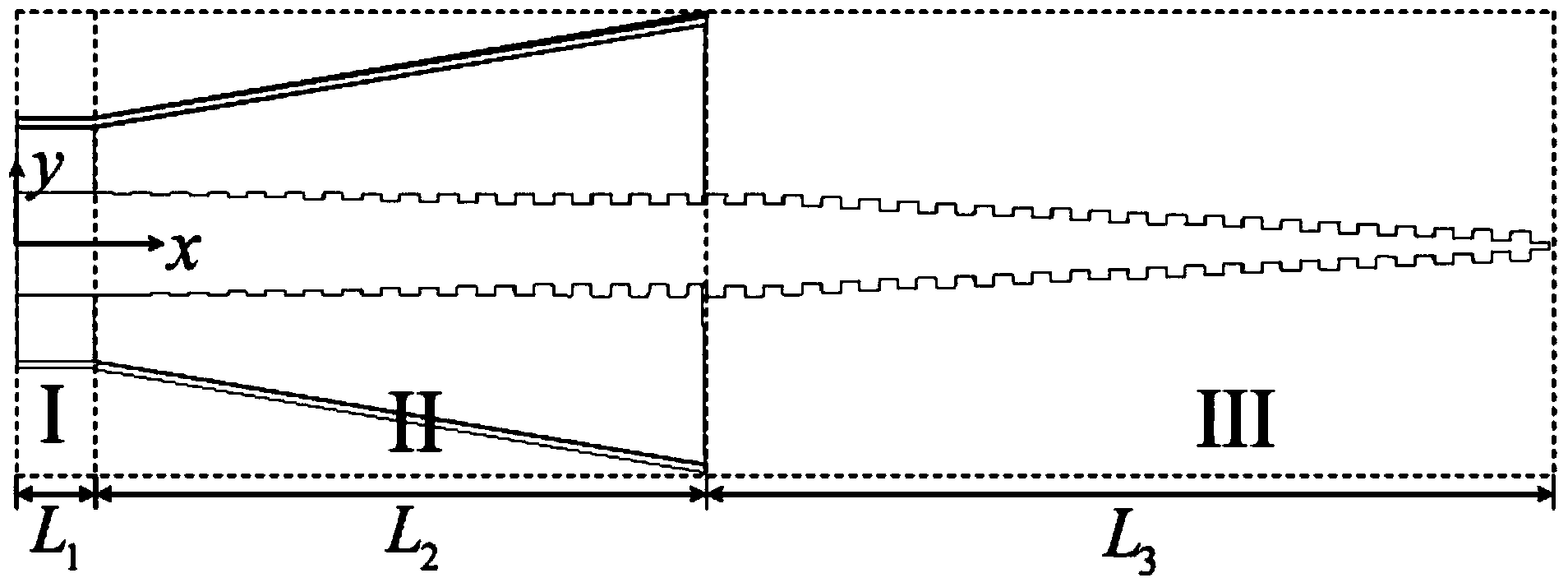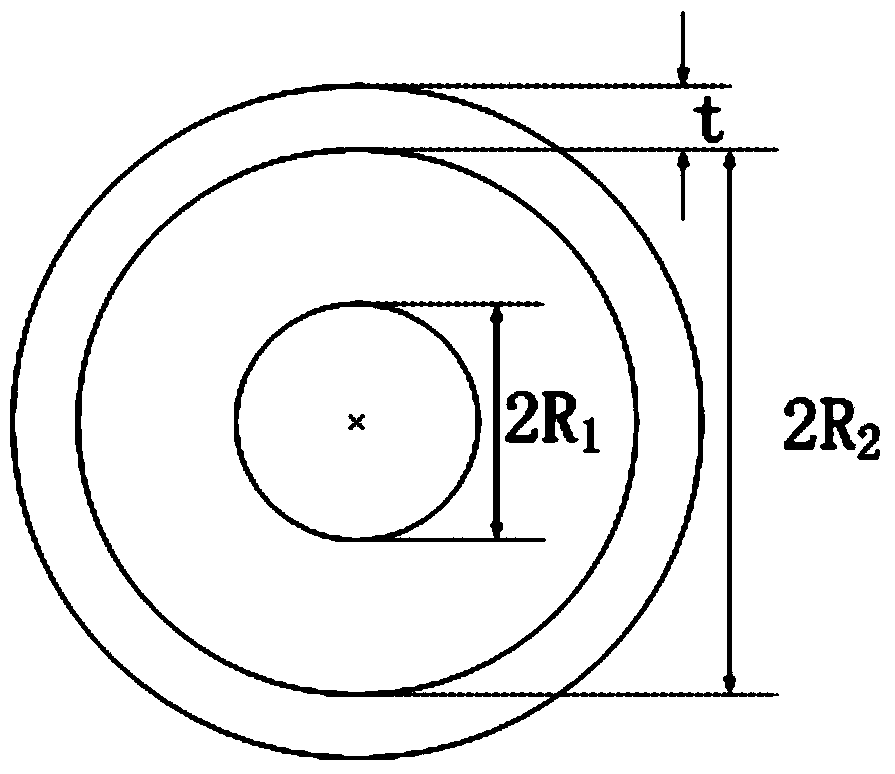Artificial surface plasmon field strength enhancer
An artificial surface, plasma field technology, applied in waveguide-type devices, electrical components, waveguides, etc., can solve problems such as no longer applicable, and achieve the effect of large field strength enhancement coefficient, expansion of application scope, and strong innovation
- Summary
- Abstract
- Description
- Claims
- Application Information
AI Technical Summary
Problems solved by technology
Method used
Image
Examples
Embodiment 1
[0025] Such as figure 1 , Figure 2 (a) shows that the field booster consists of three parts. Area I is a traditional coaxial waveguide, which is used as the input end of the signal; Area II is a transitional waveguide, including the transition between the inner conductor and the outer conductor. The gradually enlarged horn antenna is realized; the area III is a conical plasmonic waveguide, which is composed of an array of circular grooves with constant depth and width, decreasing radius, and periodic changes. The structural size parameters of the transition waveguide and the conical ion waveguide are adjusted according to the type and size of the coaxial waveguide, and match the coaxial waveguide parameters (such as waveguide type, waveguide length, waveguide cross-sectional size, etc.).
Embodiment 2
[0027] Taking the structure shown in Figure 2(b) as an example, area I is a traditional coaxial waveguide, and the single total length L 1 =200 microns, the outer diameter of the inner conductor of the waveguide is 2R 1 =280 microns, the inner diameter of the outer conductor is 2R 2 = 644 microns, wall thickness t = 10 microns. The coaxial waveguide is used as the input end of the guided wave signal.
[0028] The transition waveguide is connected with the coaxial waveguide to efficiently convert signals into SSPPs signals. As shown in Fig. 2(c), the transitional waveguide region II includes inner conductor and outer conductor transitions. The gradient depth of inner conductor transition annular groove array is from h 1 = 2.5 microns gradually increase to h according to the step size Δh = 2.5 microns 2 = 30 microns, the remainder of the annular groove array maintains the final depth h of the gradient 2 , used to achieve wavenumber matching between the coaxial waveguide an...
PUM
 Login to View More
Login to View More Abstract
Description
Claims
Application Information
 Login to View More
Login to View More - R&D
- Intellectual Property
- Life Sciences
- Materials
- Tech Scout
- Unparalleled Data Quality
- Higher Quality Content
- 60% Fewer Hallucinations
Browse by: Latest US Patents, China's latest patents, Technical Efficacy Thesaurus, Application Domain, Technology Topic, Popular Technical Reports.
© 2025 PatSnap. All rights reserved.Legal|Privacy policy|Modern Slavery Act Transparency Statement|Sitemap|About US| Contact US: help@patsnap.com



